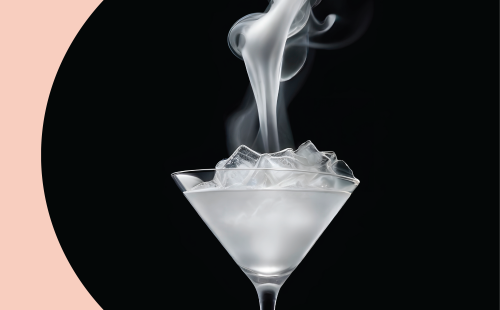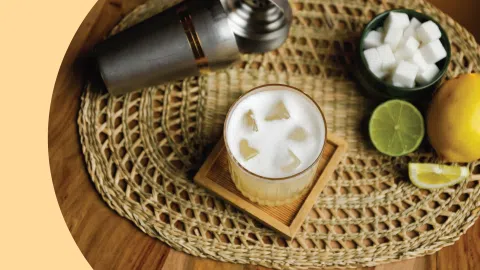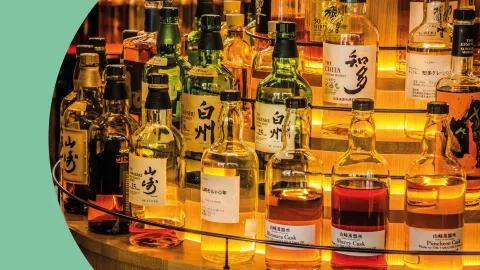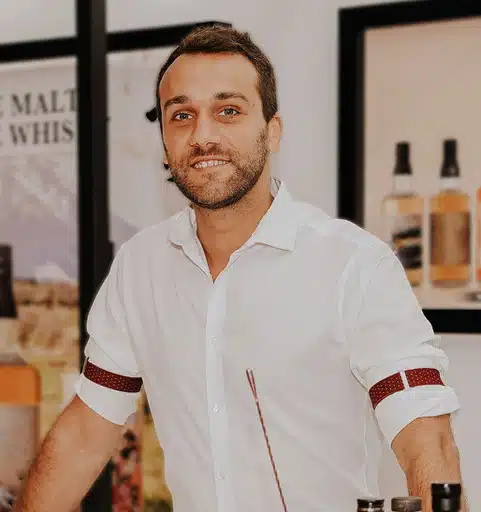Alcohol evaporates over time, with the evaporation rate varying based on temperature, light, heat, and humidity.
Alcohol has a lower boiling point (173.1°F or 78.3°C) compared to water (212°F or 100°C). This means its molecules require less energy to escape into the gas phase, leading to faster evaporation than water.
In this article, we explore the rate of alcohol evaporation during cooking and under various storage conditions – in a fridge, freezer, or at room temperature. We also investigate whether storing it in an open and unopened bottle or decanter makes any difference.
Does Alcohol Evaporate When Cooked?
Studies and data have looked into the rate of alcohol evaporation when cooked. The amount of alcohol that evaporates depends on the cooking method, the heat applied, and how long the dish is cooked. An overview of the different forms of cooking:
-
- Simmering or Boiling: According to a study by the U.S. Department of Agriculture’s Nutrient Data Laboratory, simmering or boiling alcohol in a mixture (such as a sauce or dessert cream) for 15 minutes can result in approximately 40% alcohol retention. If you extend this cooking time to 30 minutes, about 35% remains; at one hour, about 25%; and at two hours, only about 10%. This applies mostly to cooking sauces (a lot of sauces include a touch of red wine or brandy for seasoning), desserts, or marinades (marinades with saké, for example, are quite common in Japanese cuisine).
- Baking: When baking with liquor such as vodka or rum (in cakes or pastries), after 15 minutes in an oven set at around 350 degrees Fahrenheit (175 degrees Celsius), approximately 40% of the original alcohol content remains. After an hour of baking at this temperature, just over a quarter (25%) is retained.
- Flambé: When using high-heat methods such as flambé, where liquor is ignited briefly before serving, as much as 75% of its initial alcohol content can remain because the process typically lasts just a few seconds to a minute. If you are looking for low alcoholic content, allow the flambé to last for a little longer: the longer it burns, the more ethanol is consumed, and the lower the final alcohol retention.
Brandy, Rum, and certain liqueurs are often used in the flambé technique for desserts such as Crepes Suzette and Bananas Foster. But this technique can also be used in cocktails, such as the Blue Blazer, Café Brûlot Diabolique, Flaming B-52, and Zombie Cocktail. - If no heat is applied – such as when adding a splash of wine or brandy to a finished dish – up to 85% percent of its original alcoholic content could still be present, according to USDA findings.
Does Liquor Evaporate in an Unopened Bottle?
Yes, liquor can evaporate in an unopened bottle. However, the process is incredibly slow, and the amount lost is usually insignificant. No bottle seal – be it a screw cap or cork – is completely airtight. Some microscopic exchange of gases can occur, leading to minimal evaporation.

The rate at which this happens depends on temperature, humidity, and storage time. Yet even under ideal conditions, the loss of alcohol content in an unopened bottle is very gradual. Typically, less than 1% per year would be lost, an amount so small that it rarely affects the taste or potency of the liquor.
What about plastic bottles?
Liquor can evaporate from a plastic bottle, but the evaporation rate is slower than glass bottles. While not completely airtight, plastic bottles can create a tighter seal compared to glass bottles with screw caps. This reduces the air gap through which alcohol molecules can escape. Plastic also has a lower permeability compared to glass. This means alcohol molecules have a harder time passing through the plastic walls, further slowing evaporation.
Does Alcohol Evaporate Once the Bottle is Opened?
According to a study published in the Journal of Chemical Engineering, the evaporation rate for ethanol (the type of alcohol found in liquor) can range from 0.02% to 0.19% per day. The evaporation rate can slow down over time as the alcohol content decreases and depends on the storage conditions.
- High-proof spirits (40% ABV or higher) bottles like whiskey, vodka, or rum can lose 2-3% of their volume annually once opened and if stored properly. Learn here more about How to Store Liquor and Spirits.
- Lower-proof bottles (below 25% ABV), such as liqueurs, can evaporate faster, around 5-10% per year once opened.
Storing liquor in a freezer or fridge can slow down the rate of evaporation. The lower temperatures reduce the energy available for evaporation to occur. However, this applies more to high-proof spirits like vodka or rum as lower-proof liqueurs may risk freezing due to their higher water content. But be careful with frequent freezer storage of spirits with complex flavors like rum and whiskey, as this might dull the aromas and tastes. Proper storage is important as it significantly impacts shelf life: yes, liquor can go bad!
Does Liquor Evaporate from a Decanter?
No decanter can completely prevent liquor from evaporating. However, some decanters can significantly minimize evaporation compared to storing your liquor in the original bottle.
Here are a few factors that influence evaporation in decanters:
- Airtight seal: Look for decanters with a ground glass stopper that creates a tight seal. This minimizes the air gap where alcohol molecules can escape.
- Smaller surface area: Choose a decanter with a narrow opening and a smaller surface area than the original bottle. This reduces the amount of exposed liquid surface where evaporation can occur.
- Material: While glass is the most common material for decanters, some argue that crystal decanters offer slightly better sealing properties. However, the difference is likely negligible.
- Additional features: Some decanters include additional features like vacuum seals or nitrogen purging systems that claim to further reduce evaporation. However, their effectiveness and cost-effectiveness compared to simpler decanters might be debatable.
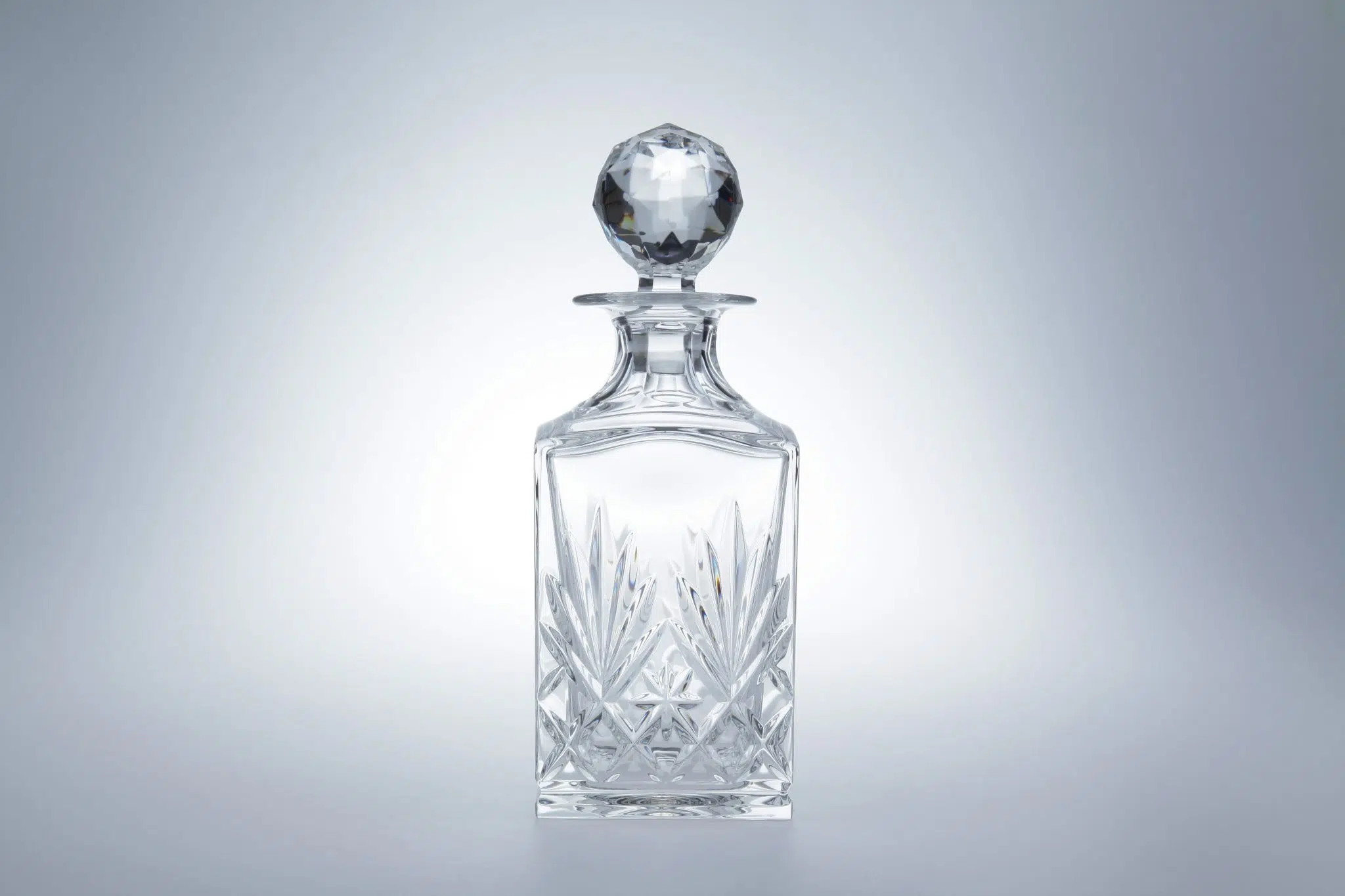
While decanters can enhance the aesthetic appeal of your liquor and improve aeration for certain spirits, they are not necessary for proper storage. The original bottle might still be the best option if you store your liquor for long periods.
How Fast Does Alcohol Evaporate in a Glass at Room Temperature?
Let’s start with the typical glass of beer left overnight. With its lower alcohol content (typically 4-7%) and higher water content, beer will evaporate relatively quickly at room temperature, especially in a wide glass or dry environment. A glass of beer can lose 20-30% of its volume overnight at room temperature, leaving it flat and stale.
A glass of high-proof spirits such as whiskey is different. Having a higher alcohol content (40% or more), whiskey in a glass will evaporate slower than beer under the same conditions. Over a night, the loss might be noticeable but not drastic: about 5%. However, leaving it open for extended periods can still affect its flavor and aroma.
FAQs
What is “Angel’s Share”?
The term “Angel’s Share” is a phrase used in the distilling industry to describe the portion of liquor that evaporates during the aging process. As the spirits age in wooden barrels, some naturally evaporate through the barrel, resulting in a loss. This evaporated spirit is whimsically referred to as the “Angel’s Share,” suggesting that it’s a small price paid for an angel’s blessing on the remaining liquor… Or that the part that evaporated disappeared because angels drank it!
What is the “Devil’s Cut”?
The “Devil’s Cut” refers to the small amount of whiskey trapped deep within the barrel’s wood during aging. This liquid is inaccessible when the barrel is emptied and evaporates over time, contributing to the natural “angel’s share” of whiskey lost during maturation. While some consider this a loss, others romanticize it as a portion claimed by the devil himself.
The term was patented by Jim Beam in 2011 when launching their Devil’s Cut whiskey. After aging, the remaining liquid is extracted from the wood, laid to rest for a little while, blended with extra aged whiskey, and then bottled at 90 proof to create a new kind of bourbon.
How long to boil wine to remove the alcohol?
Studies from the USDA Nutrient Data Laboratory show that even after boiling for 2-3 hours, some wine can retain up to 5% alcohol content. Boiling wine is not an effective way to remove the alcohol, and it can significantly harm the flavor and quality of the drink (as some of the water will evaporate as well, you may be left with a concentrated, sour, and more bitter or tannic wine). If a recipe calls for wine and you’re concerned about the alcohol content, simmer it for 15-20 minutes instead of boiling. This allows some alcohol to evaporate without significantly harming the flavor. Also, consider non-alcoholic alternatives, as a lot of non-alcoholic beverages are available with similar flavor profiles.
